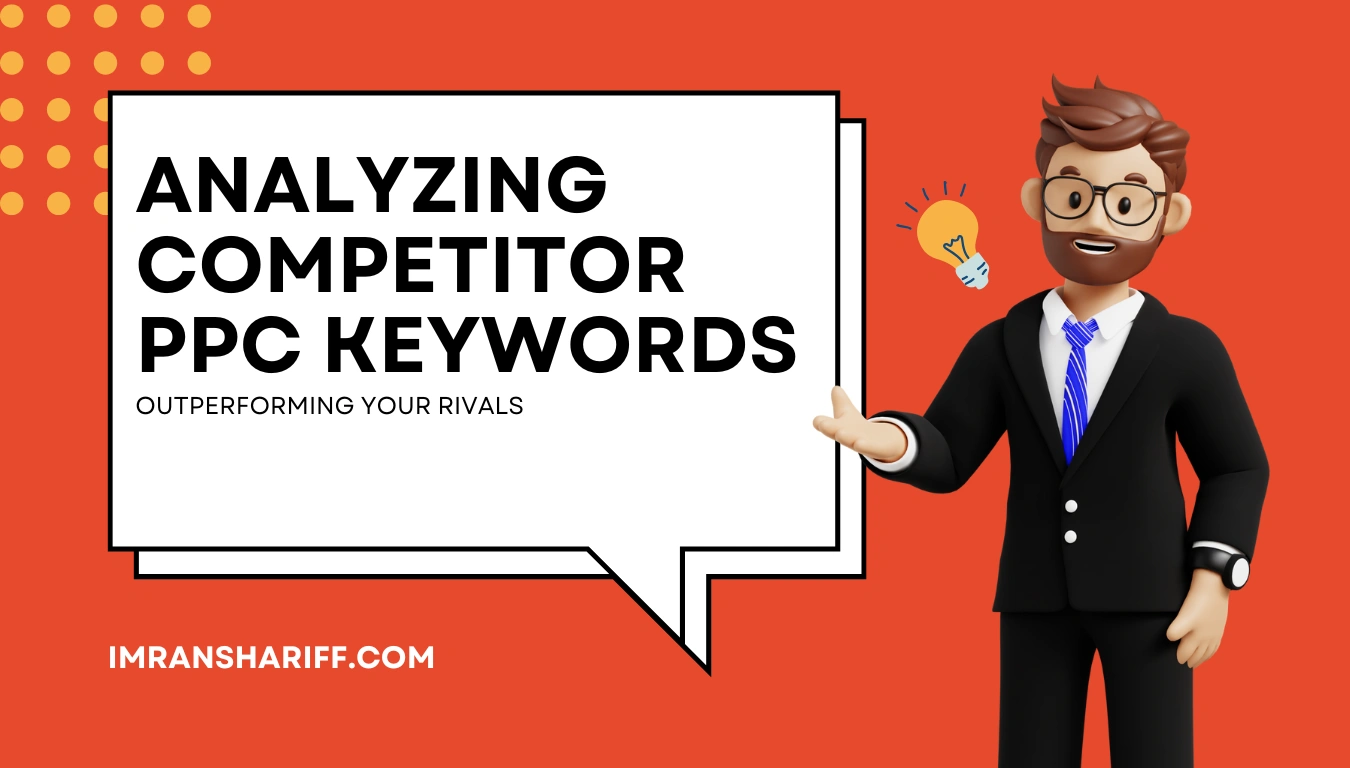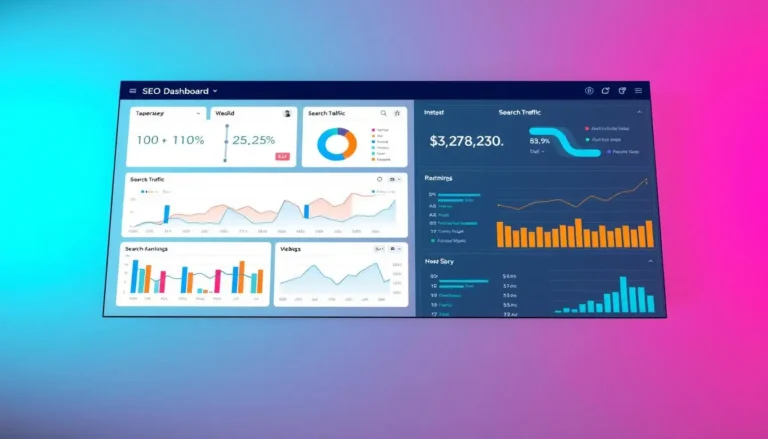Analyzing Competitor PPC Keywords: A Comprehensive Guide to Outperforming Your Rivals

Ever wondered how to beat your competitors in digital ads? Analyzing their PPC keywords can give you a big advantage. This guide will show you how to do ppc keyword research and competitive keyword research. You’ll learn to find new chances and boost your campaign’s success.
By looking at your competitors’ PPC keywords, you can make your campaigns better. You’ll learn to target keywords, set bids, and write ads more effectively. This means studying your competitors to find new ways to succeed in the market.

Knowing what your rivals do with keywords helps you make smart choices. You can adjust your bids, avoid wasting money, and increase your ROI. This is all about using competitor keyword analysis to your advantage.
Understanding the Importance of Competitor PPC Keywords
Watching your competitors’ PPC strategies is key to your success. By using ppc keyword spying, you find out which keywords they use. This helps you see where they’re putting their money.
Why Competitive Analysis Matters in PPC
Doing competitive analysis in PPC keeps you ahead. By looking at what your competitors do, you learn their plans. This lets you change your strategy to stay competitive.
Key Benefits of Monitoring Competitor Keywords
- Identify market gaps and opportunities
- Optimize your budget by focusing on high-performing keywords
- Gain insights for crafting more effective ad copy

Impact on Your PPC Strategy
Knowing your competitors’ keyword strategy changes your own PPC plan. With ppc competitor analysis, you pick the best keywords. This way, your ads reach the right people without costing too much.
Essential Tools for PPC Competitor Research
To do a good PPC competitor research, you need the right tools. I use SpyFu and SEMrush to get insights into my rivals’ strategies. These tools help me understand their bidding and keyword tactics.
SpyFu is great for finding keywords and analyzing ad copy. It shows which keywords my competitors are using. The Ad History feature lets me see past campaigns. This helps me learn about their ad strategies and budgets.
SEMrush is also a key tool for improving campaigns. Its PPC Keyword Tool finds new keywords and shows how competitive they are. The Ad Builder lets me create ads that beat my competitors, keeping my campaigns ahead.

Using these tools, I can improve my bidding and campaign optimization. They give me the data I need to make smart choices. This makes my PPC efforts competitive and successful.
Getting Started with Competitor PPC Keywords Analysis
Starting to analyze competitor ad campaigns means first figuring out who your rivals are in PPC. Tools like Ahrefs, SpyFu, and Google Ads’ Auction Insights give you the scoop. They show you which brands are after the same keywords and how well they’re doing.
Identifying Your Main Competitors
Your main PPC rivals might not be the same as your usual business competitors. By using tools for competitive PPC research, you can find out which brands are after your target keywords. This is key for tracking your performance and getting a handle on the competition.
Setting Up Your Research Framework
Building a good research framework means picking out important data to watch, like impression share, cost per click (CPC), and keyword overlap. This helps you analyze your competitors’ moves and compare your own performance to the industry average.
Establishing Tracking Parameters
Once your framework is set, it’s time to decide what to track. Keep an eye on things like overlap rate, position above rate, and outranking share. Regularly tracking these metrics lets you stay on top of any changes in your competitors’ PPC strategies, so you can adjust your plan as needed.
| Metric | Description |
|---|---|
| Impression Share | The percentage of ad impressions you and your competitors received versus what you were eligible to receive. |
| Overlap Rate | How often a competitor’s ad and your ad both receive an impression. |
| Position Above Rate | How often a competitor’s ad appears in a higher position than yours when both ads are displayed simultaneously. |
| Outranking Share | The frequency of your ad ranking higher in the auction than the competitor’s. |
| Cost per Click (CPC) | The amount you pay for each click on your ad. |
Advanced Techniques for Analyzing Competitor Ad Copy
Understanding your competitors’ ad strategies is key to enhancing your own campaigns. By delving into their value propositions, call-to-action patterns, and winning ad elements, you can refine your ppc competitor keyword strategy.
Decoding Competitor Value Propositions
Examine the core benefits your competitors highlight. Look for consistent themes and key phrases that resonate with their audience. This insight aids in developing a strong competitive keyword bidding strategy.
Analyzing Call-to-Action Patterns
Study the language and urgency in competitors’ calls to action. Effective CTAs can guide your ad copy to drive higher engagement and conversions.
Extracting Winning Ad Elements
Identify the elements that make competitors’ ads successful, such as headline structures, offers, or visual components. Incorporating similar strategies can enhance your competitor ad performance analysis.
| Technique | Description | Tools |
|---|---|---|
| Value Proposition Analysis | Identify key benefits and unique selling points | SEMrush, SpyFu |
| CTA Pattern Analysis | Evaluate the effectiveness of call-to-action phrases | Google Ads, Ahrefs |
| Winning Elements Extraction | Determine which ad components drive performance | Adbeat, iSpionage |
Competitive Bidding Strategy Development
Starting a competitive bidding strategy means ppc competitor tracking. Watching your rivals helps you see their bidding and ad spots. Tools like SpyFu and the Facebook Ad Library are key for evaluating competitor ad spend. They show how much they spend on different keywords.
Knowing how much your competitors spend helps you plan your budget. By looking at their ad copy, you find out which keywords work for them. This lets you see where you can outbid them.
Here are key steps to develop your bidding strategy:
- Analyze competitors’ ad spend and identify high-performing keywords.
- Estimate their budget using available tools to set realistic bid amounts.
- Focus on long-tail keywords where competition may be lower and costs are more manageable.
- Adjust your bids based on real-time competitor actions to stay ahead in the auction.
- Balance aggressive bidding with your overall budget to ensure sustainable campaign performance.
Using these strategies, you can make your PPC campaigns better. It’s important to balance high bids with your budget. This keeps you competitive without spending too much. Always update your strategy based on what your competitors do. This keeps you ahead in the competitive PPC world.
Uncovering Hidden Keyword Opportunities
Discovering hidden keyword opportunities can give your PPC campaigns a big boost. By using competition analysis tools, you can find valuable terms your competitors might miss.
Long-tail Keyword Discovery
Long-tail keywords are specific phrases that attract targeted traffic. Through competitive keyword analysis, I find long-tail keywords with less competition but high intent. This approach lowers your cost-per-click and boosts conversion chances.
Seasonal Keyword Patterns
Understanding seasonal trends helps tailor your PPC campaigns for peak times. By analyzing adword competitor analysis, I spot seasonal keyword patterns that competitors might overlook. This lets me take advantage of timely opportunities.
Geographic Targeting Insights
Geographic targeting helps reach the right audience in specific locations. With competition analysis tools, I learn which regions competitors target and find untapped areas for my ads to excel.
- Identify low-competition, high-intent long-tail keywords.
- Leverage seasonal trends to optimize ad timing.
- Expand your reach by targeting overlooked geographic areas.
| Keyword Opportunity | Strategy | Benefits |
|---|---|---|
| Long-tail Keywords | Use competitive keyword analysis to find specific phrases | Lower CPC and higher conversion rates |
| Seasonal Keywords | Analyze seasonal patterns through adword competitor analysis | Maximize relevance during peak times |
| Geographic Insights | Utilize competition analysis tools to explore new regions | Reach underserved markets and increase market share |
Implementing Data-Driven PPC Campaign Optimization
Optimizing your PPC campaigns needs a smart plan based on real data. By tracking your competitors’ keywords, you can see what works for them. This helps you tweak your campaigns to match their success.
Here are key steps to implement data-driven optimizations:
- Adjust Keyword Targeting: Use keyword analysis tools to refine your target keywords. Balance short-tail and long-tail options for a wide and focused reach.
- Refine Ad Copy: Look at your competitors’ ad copy to find what works. Add similar messages to your ads to grab attention.
- Optimize Bidding Strategy: Adjust your bids based on your competitors’ keyword ranking. This helps you compete without spending too much.
- Implement Negative Keywords: Cut down on wasted ad spend by excluding irrelevant search terms. This is based on what you learn from your competitors.
Keeping a close eye on your campaigns is key as the PPC world changes. Watch metrics like CTR, CPC, and ROI to keep your campaigns sharp. Using tools like Improvado makes tracking and adjusting easier and faster.
| Optimization Technique | Action | Benefit |
|---|---|---|
| Keyword Targeting | Balance short-tail and long-tail keywords | Attract diverse and targeted traffic |
| Ad Copy Refinement | Incorporate effective competitor messaging | Increase CTR and engagement |
| Bidding Strategy | Adjust bids based on competitor ranking | Improve ad placement and cost efficiency |
| Negative Keywords | Exclude irrelevant search terms | Reduce wasted ad spend |
Measuring and Tracking Competitor Performance
It’s key to watch how your competitors do in PPC campaigns to improve your ppc strategy. Using advertising intelligence gives you insights for smarter choices.
Key Performance Metrics to Monitor
Knowing the right metrics is crucial for checking how well competitors do:
- Impression Share: Shows how often your ads show up compared to others.
- Average Position: Tells you where your ads rank on search pages.
- Click-Through Rate (CTR): Measures how well your ads draw clicks.
Creating Performance Benchmarks
Setting benchmarks means making standards from competitor data:
- Use tools like Semrush and Google Ads Auction Insights to gather data.
- Look at competitors’ digital marketing tools to get their tactics.
- Set goals to beat your competitors.
Competitive Gap Analysis
Finding gaps between your performance and your competitors’ shows where to improve:
- See where your ppc strategy is lacking.
- Find ways to boost your ad quality score.
- Work on keyword targeting to close the gap.
Building a Responsive Keyword Strategy
Creating a responsive keyword strategy is key to staying ahead in PPC. By analyzing competitor ad copy regularly, you can spot changes in their marketing. Watching top competitor keywords helps you find new chances and market gaps.
- Quickly add new keywords your competitors are using.
- Adjust or stop using keywords that don’t work well to save money.
- Do keyword audits often to keep up with market changes.
Using tools like Google Ads Auction Insights and Ahrefs for competitive PPC analysis gives you important data. This helps you compare ads and make smart choices. It keeps your keyword strategy flexible and effective.
Leveraging Competitive Intelligence for Better ROI
By using insights from competitor keyword research, I can improve my PPC bid strategy. This helps me get the most out of my budget. I make sure to spend on areas that will have the biggest impact.
Budget Allocation Insights
Looking at competitor data helps me decide where to spend my budget. I find out which keywords are most profitable for others. Then, I adjust my spending to grab those opportunities too.
Market Share Analysis
Understanding my market position against rivals shows me where to grow. Market share analysis tells me where competitors are strong. This lets me plan to reach areas they haven’t.
Campaign Effectiveness Metrics
By checking how my PPC campaigns do, I see how effective they are. I watch key performance indicators to make sure I’m doing well. This helps me keep up with industry standards.
| Metric | My Campaign | Top Competitor |
|---|---|---|
| Click-Through Rate (CTR) | 4.5% | 5.2% |
| Conversion Rate | 3.8% | 4.1% |
| Cost Per Click (CPC) | $2.50 | $2.30 |
| Return on Ad Spend (ROAS) | 400% | 450% |
Conclusion: Mastering Competitor PPC Analysis for Long-term Success
Mastering competitor PPC analysis is key to staying ahead in digital advertising. Tools like SEMrush and SpyFu help me monitor keywords and understand my competitors’ strategies. This lets me see which keywords work for them and adjust my campaigns.
Having a strong competitor keyword bidding strategy is vital for success. I analyze metrics like click-through rate (CTR) and return on ad spend (ROAS) to improve my PPC. This way, I make sure my campaigns are effective and cost-efficient.
Keeping up with PPC trends and tools is important. It helps me find new opportunities and quickly adapt to changes. Knowing how to pace and budget my campaigns ensures I grow and stay strong in the market.
The future of PPC will bring more automation and artificial intelligence. By always improving my analysis and using new strategies, I can stay ahead. This will help me succeed in the long run.







